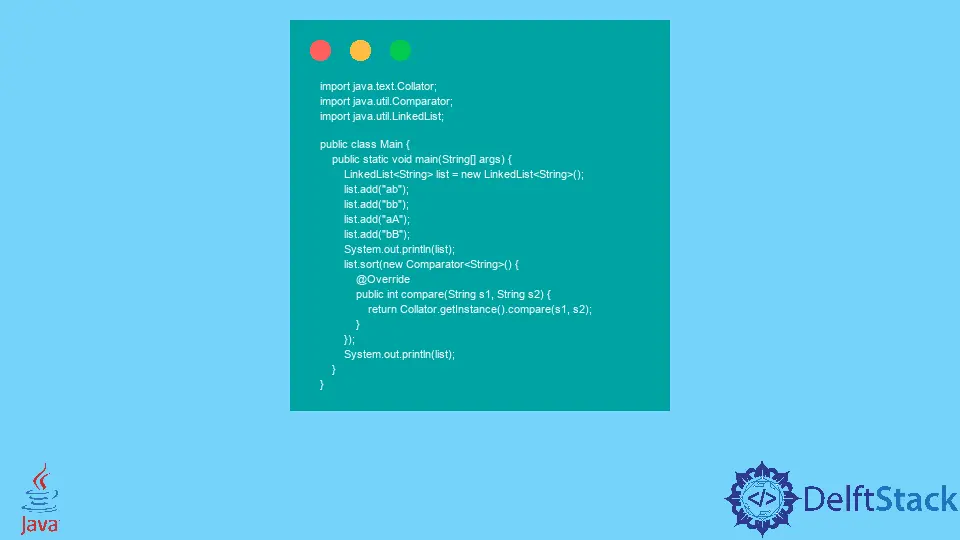How to Sort Linked List in Java
Rashmi Patidar
Feb 02, 2024
Java
Java Linked List
Java List

A Linked List in Java is a data structure or a collection that allows users to create a dynamic array in the memory. The list does not hold any pre-defined size. It creates nodes dynamically and stores value and reference to the next node in a single memory address. The list elements keep the values in the sequential order, or the list maintains the insertion order in which the elements get inserted.
Sorting is defined as the method of arranging the elements in a data structure in a definite order. The arrangement can either be in ascending or descending order, depending on the requirement. Note that there can be various approaches to sort the list collection.
Below is the code block to sort the elements in the array.
import java.text.Collator;
import java.util.Comparator;
import java.util.LinkedList;
public class Main {
public static void main(String[] args) {
LinkedList<String> list = new LinkedList<String>();
list.add("ab");
list.add("bb");
list.add("aA");
list.add("bB");
System.out.println(list);
list.sort(new Comparator<String>() {
@Override
public int compare(String s1, String s2) {
return Collator.getInstance().compare(s1, s2);
}
});
System.out.println(list);
}
}